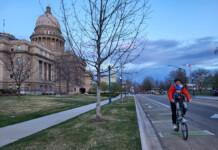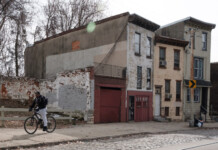By Charles Pekow
Let’s face it: planners just don’t know enough about how many bicyclists and pedestrians are using the roads. Transportation officials have long used established methods to count motorists but the data on non-motorized users aren’t good enough to plan rationally.
Or so determined the Transportation Research Board (TRB), which is planning to hire a contractor to rememdy that. TRB is offering $400,000 and two years to come up with better methods to count cyclists and walkers so planners can make more informed decisions about what facilities they need for them.
TRB stated that most of the time, planners decide where they want to build a bike facility, then try to find data about cyclists. With the proper tools, they could work in reverse: find out how many cyclists ride where, then determine where they need to plan.
In its request for proposal (RFP) for someone to develop a better way to gauge bicycle and pedestrian use, TRB noted that transportation and planning officials often overlook plenty of data sources. They don’t bother to use video cameras, for instance, because it takes a long time to count riders videotaped. But often, planners don’t even have to install cameras to count them because security cameras already in place could do the trick.
Additionally, plenty of other technology is available, including microwave, infrared sensors, loop detectors, pressure sensitive mats, and communication devices. Plus, software can extract bicycle data from other sources. “Research is, therefore, needed to develop guidance for practitioners on existing, new, and innovative methods and technologies to capture pedestrian and bicycle volume data,” according to the RFP.
The contractor will first find out what tools planners can currently use, then come up with a guide for state and local officials on how to effectively use existing methods of counting cyclists and pedestrians and use new technological devices. The guide will also show how to use data to determine needs, develop projects and improve safety on both site-specific and general planning.
The deadline to respond to the RFP is November 17. You can see it at http://apps.trb.org/cmsfeed/TRBNetProjectDisplay.asp?ProjectID=3159.






